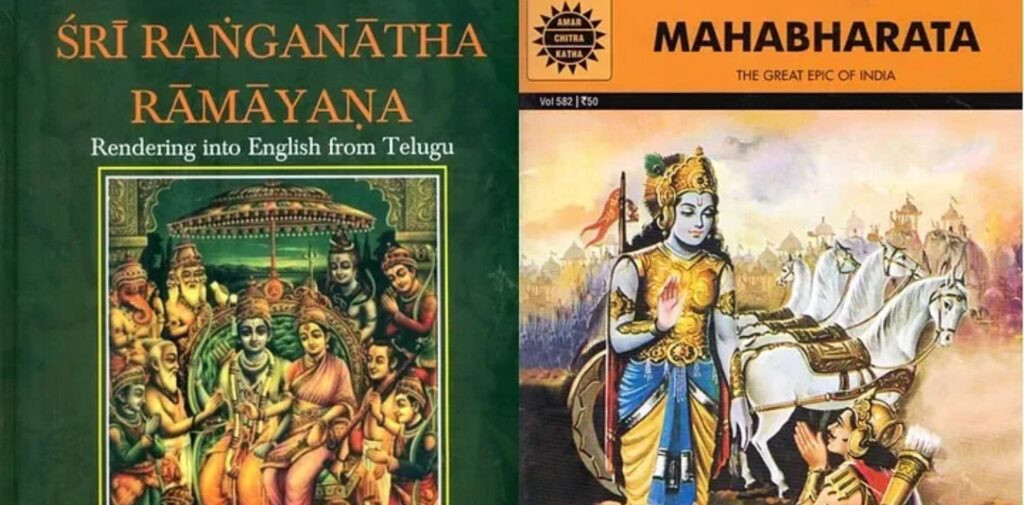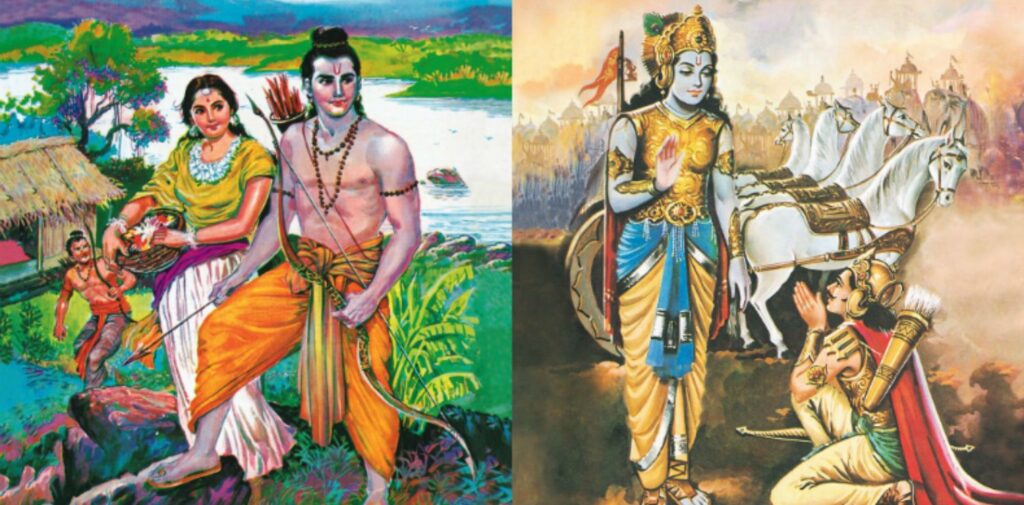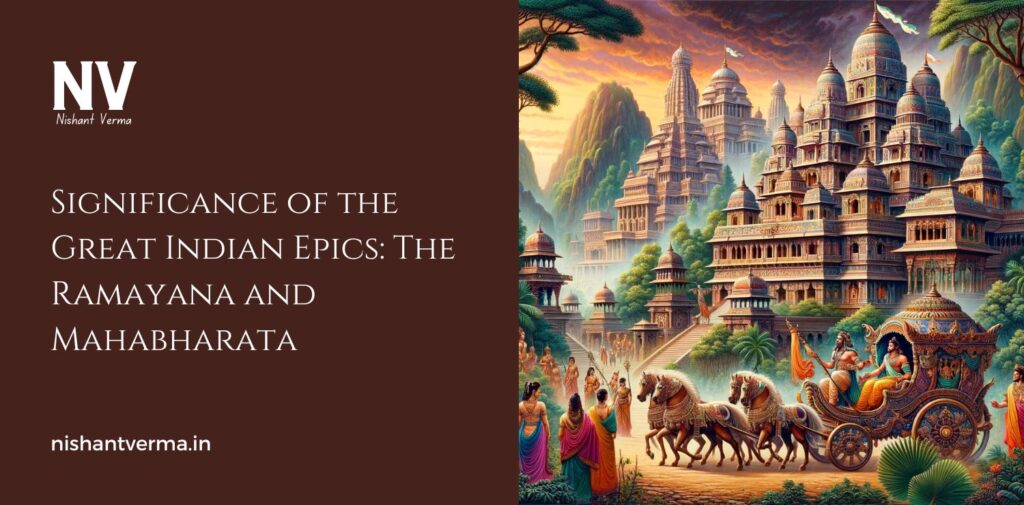India has a rich history filled with stories of heroes, gods, and moral lessons. Two of the most important stories in Indian culture are the Ramayana and the Mahabharata. These are not just old stories from ancient times, but they hold great significance even today. They are full of lessons about life, love, duty, and the struggle between good and evil. In this article, we will explore the importance of these two great epics, the Ramayana and the Mahabharata, and understand why they are so meaningful to Indian culture and beyond.
What Are the Ramayana and Mahabharata?
The Ramayana and the Mahabharata are two epic stories written thousands of years ago in India. These stories are important parts of Hindu culture, but they are also respected by people from other religions. They were originally passed down orally from one generation to the next, and later they were written down in different languages.
The Ramayana is a story about the life of Lord Rama, an ideal prince and a hero. It is written by the sage Valmiki. The story follows Rama’s journey to rescue his wife, Sita, from the demon king Ravana. Along the way, Rama faces many challenges and learns important lessons about duty, respect, and righteousness.
The Mahabharata, on the other hand, is much longer and more complex. It is attributed to the sage Vyasa and tells the story of a great war between two families, the Pandavas and the Kauravas. This epic includes not just the war but also teachings on life, morality, politics, and human nature. One of its most famous parts is the Bhagavad Gita, where Lord Krishna shares spiritual wisdom with the warrior Arjuna.

Why Are the Ramayana and Mahabharata Important?
Both of these epics are much more than just stories. They are treasures of wisdom that have shaped Indian culture for thousands of years. They teach us lessons about life, ethics, love, and the importance of making the right choices.
Teaching Values and Morality
One of the main reasons the Ramayana and Mahabharata are so important is because they teach us about values and morality. In the Ramayana, Lord Rama is often seen as the perfect man—brave, righteous, and always ready to help others. Through his life, we learn the importance of being truthful, kind, and just, no matter how difficult the situation may be.
In the Mahabharata, the epic explores many complex issues like greed, revenge, loyalty, and friendship. The characters in the Mahabharata face tough choices, and each choice has consequences. For example, Arjuna, one of the Pandava brothers, faces a moral dilemma during the Kurukshetra War. He doesn’t want to fight against his own relatives, but Lord Krishna advises him that sometimes we must make difficult decisions to do what is right. This lesson about choosing the right path, even when it is difficult, is important for everyone, especially young people.
Understanding Dharma (Duty)
Both epics talk a lot about dharma, which is a Sanskrit word that means duty or righteousness. In the Ramayana, Lord Rama’s life shows us how important it is to follow our duty, even when it is tough. For example, Rama goes into exile for 14 years to keep the promise his father made, even though it means leaving his wife and kingdom. This teaches us the value of keeping promises and doing what is right, even if it’s hard.
In the Mahabharata, the concept of dharma is explored even more deeply. Each character has their own dharma, or duty, depending on their role in life. For example, Arjuna’s dharma as a warrior is to fight in the battle, even though it means fighting against his own family. This teaches us that we all have a duty in life, and it’s important to recognize and follow it.
Stories of Courage and Sacrifice
Both epics are filled with stories of courage and sacrifice. In the Ramayana, we see how Lord Rama and his loyal brother, Lakshmana, bravely fight against the powerful demon king Ravana to rescue Sita. Rama and Lakshmana show that courage is not just about fighting; it’s also about standing up for what is right and protecting others.
In the Mahabharata, we see many examples of sacrifice. The Pandavas, especially, are often forced to make difficult choices for the greater good. One of the most powerful moments in the Mahabharata is when Lord Krishna sacrifices his own life to help the Pandavas win the war. His selfless love and sacrifice remind us that true greatness comes from serving others and doing the right thing, no matter the cost.

Teaching About Relationships
Both epics also teach us about the importance of relationships, whether it’s between family members, friends, or spouses. In the Ramayana, we see how deeply Lord Rama loves his wife, Sita. Their relationship is built on trust, loyalty, and mutual respect, and Rama’s determination to rescue Sita shows the strength of their bond.
In the Mahabharata, the relationship between the Pandavas and their cousins, the Kauravas, is complicated. Despite being family, they become enemies because of jealousy, greed, and misunderstandings. This teaches us that good relationships are based on love and respect, and when we let negative emotions like greed and jealousy take over, it can lead to conflict.
Spiritual Wisdom
Both the Ramayana and Mahabharata are also full of spiritual wisdom. The Bhagavad Gita, which is a part of the Mahabharata, is one of the most important spiritual texts in Hinduism. In the Bhagavad Gita, Lord Krishna gives Arjuna valuable teachings on how to live a good life, be calm in difficult times, and understand the true nature of the world. It teaches about karma (action), bhakti (devotion), and jnana (knowledge), and has inspired millions of people, not just in India, but around the world.
The Ramayana also contains spiritual lessons about devotion and faith. Lord Rama’s devotion to his family, his duty, and to his god (he is believed to be an incarnation of the god Vishnu) shows how devotion can lead to a meaningful and successful life.

The Influence of the Ramayana and Mahabharata
The Ramayana and Mahabharata have had a huge influence on Indian culture. They have inspired countless generations through their stories, characters, and teachings. The characters from these epics are still celebrated today in festivals, performances, and literature. In fact, the Ramayana is performed as a play in many parts of India during the festival of Diwali, and the Mahabharata is also performed in various forms like dance and theater.
Both epics have also spread beyond India and influenced cultures in Southeast Asia, such as in Thailand, Indonesia, and Cambodia, where versions of the Ramayana and Mahabharata are also told.
Conclusion
The Ramayana and Mahabharata are more than just ancient stories. They are powerful texts that teach us important lessons about life, duty, values, and spirituality. These epics have been a source of wisdom for thousands of years, and their lessons still apply to our lives today. Whether it’s learning about the importance of relationships, making the right choices, or finding spiritual peace, the Ramayana and Mahabharata continue to guide people around the world.
By studying these epics, we not only learn about India’s rich history and culture, but we also gain insights into how to live a better, more meaningful life.




